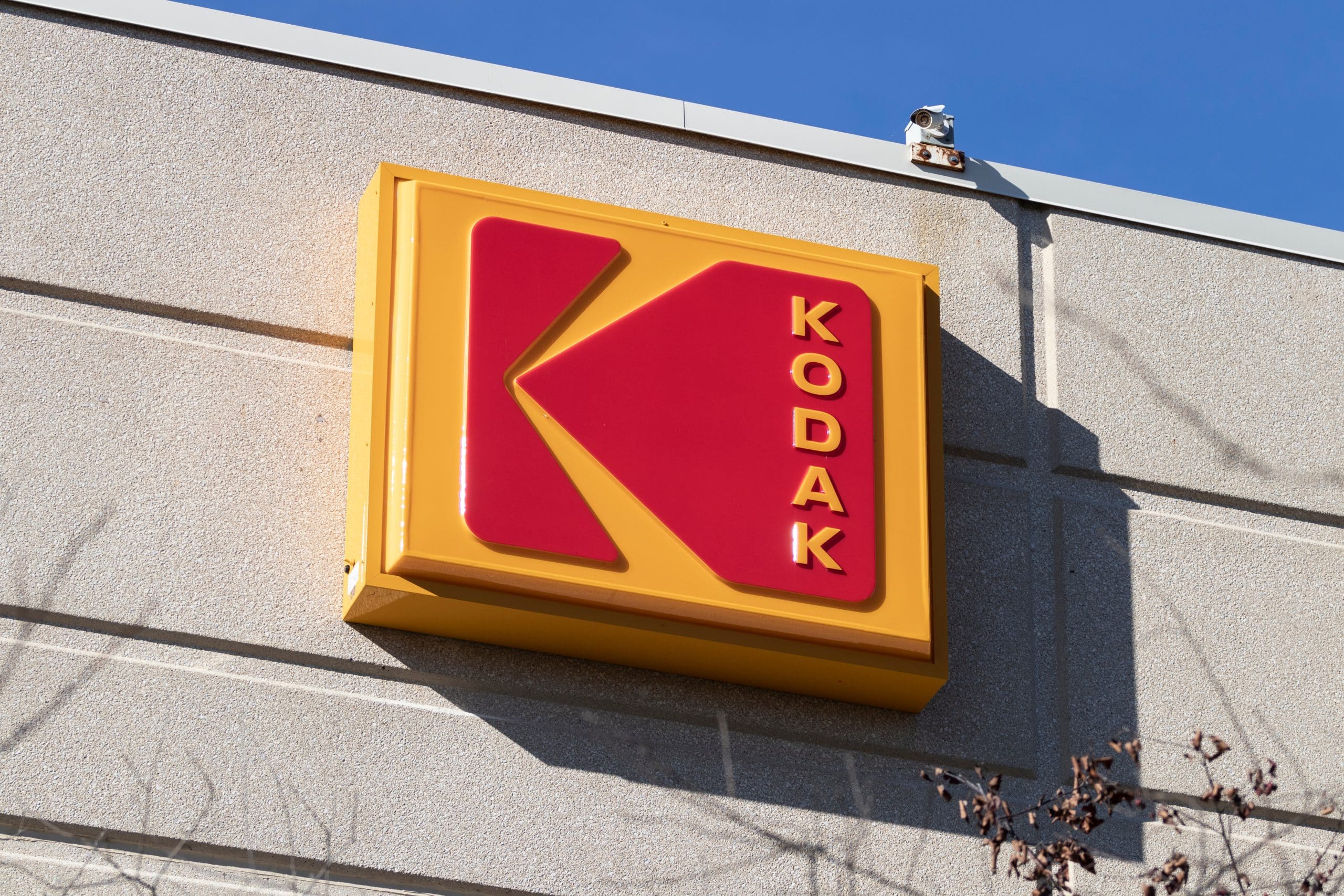Kodak warns it might not continue in business: Analyzing the factors behind its struggles
Kodak, a name once synonymous with photography, now finds itself warning that it may not continue in business. This alarming statement raises questions about the factors contributing to the iconic company’s struggles. Let’s explore the essential reasons behind this precarious situation, as well as what this means for the brand and its customers.
One significant factor impacting Kodak’s business is the rapid evolution of technology. The digital age has radically transformed the photography landscape. Traditional film cameras, which were Kodak’s hallmark products, have seen a steep decline in demand. With the advent of smartphones equipped with advanced cameras, consumers increasingly prefer the convenience of digital photography. This shift has rendered Kodak’s once-revered film products nearly obsolete, leaving the company in a lurch.
Compounding this issue is Kodak’s slow adaptation to these changes. While many tech companies quickly embraced digital technology, Kodak struggled to pivot from its film-based roots. Despite attempts to introduce digital cameras and imaging technologies, the company was late to the game. Competitors like Canon and Nikon had already established themselves in the digital sphere, capturing the market share that Kodak desperately needed. This delay in embracing the inevitable change set the stage for Kodak’s daunting financial challenges.
Financial instability is another critical factor affecting Kodak’s future. In recent years, the company has reported significant losses, leading to doubts about its ability to sustain operations. Increased debt, coupled with declining revenue, creates a vicious cycle that makes it harder for Kodak to invest in new technologies or products. Investors and stakeholders may think twice before backing a company that seems to struggle against the current of innovation.
It’s also essential to consider Kodak’s branding. Once a household name representing quality photography, the brand now faces an identity crisis. As newer brands emerge and capture consumer interest with fresh marketing strategies, Kodak seems stuck in the past. The inability to rebrand itself effectively has left consumers questioning its relevance in today’s market.
Furthermore, Kodak’s supply chain disruptions have exacerbated its woes. Like many businesses, Kodak has faced difficulties brought on by global events, such as the COVID-19 pandemic. These disruptions have affected production timelines, leading to an inability to meet consumer demands. As a result, customers may turn to alternative brands that can better serve their needs, further eroding Kodak’s market position.
In light of these challenges, it is critical for Kodak to assess and recalibrate its strategies to enhance its chances of survival. Here are a few potential strategies Kodak could consider:
- Embrace digital innovation: Kodak needs to ramp up efforts in digital imaging technology. Developing innovative digital solutions, such as cloud storage for photos and advanced editing software, might attract a younger consumer base.
- Rebrand for relevance: A fresh marketing approach could help Kodak regain lost ground. By connecting emotionally with consumers through campaigns that emphasize nostalgia while celebrating modern photography, Kodak could become relevant once again.
- Diversify product offerings: Exploring other markets beyond photography could help Kodak recover financially. For instance, delving into printing technology or multimedia products could provide new revenue streams.
- Strengthen online presence: An aggressive online marketing strategy could help Kodak reengage with consumers. E-commerce and engaging digital marketing campaigns can reach wider audiences.
Kodak’s warning about its potential exit from the business world is a wake-up call. The brand stands at a crossroads where timely and decisive action is essential. By addressing technological advancements, rebranding, diversifying offerings, and enhancing digital presence, Kodak may still find a way to navigate its challenges. However, if these steps do not happen soon, the once-great company risks fading into irrelevance. For those who grew up with Kodak, this is a heartbreaking prospect — it’s a reminder of how quickly the tides of change can shift in the world of business.
The future of photography: How digital trends are impacting traditional companies like Kodak
The world of photography is rapidly changing, largely due to digital advancements. Traditional companies like Kodak are feeling the pressure as they adapt to these shifts. Understanding how digital trends impact these businesses is essential to grasping the future of photography.
Kodak, once a titan in the photography industry, has struggled to keep pace with digital innovation. The rise of smartphones and digital cameras has dramatically altered how we capture and share images. Instead of developing photos in a darkroom, many consumers now rely on their mobile devices, leading to an inevitable decline in film photography. This change is not just a trend — it’s a fundamental shift in how people think about photography.
One significant trend affecting Kodak and similar companies is the growing popularity of social media. Platforms like Instagram and Snapchat have made sharing photos as easy as a few taps on a screen. This immediacy has led to a preference for digital formats over traditional film. You might find that you capture hundreds of photos each day on your phone, sharing moments in real-time rather than waiting for prints. This instantaneous gratification is something traditional photography can’t match.
In addition to social media’s influence, there’s also the proliferation of editing software and apps that allow users to enhance and manipulate their photos effortlessly. Applications like Adobe Lightroom and VSCO enable anyone to create stunning images with only a few clicks. This democratization of photography has broadened the creative possibilities for consumers, pushing Kodak to reconsider its position in the market.
Another factor impacting traditional companies is the environmental considerations tied to film production. Many consumers today are more conscious of sustainable practices. As film processing involves chemicals and plastic, the environmental footprint of traditional photography is significant. This shift in consumer mindset puts additional pressure on film-based companies to adapt or risk becoming obsolete.
Kodak has attempted to pivot in response to these trends. The brand has diversified its offerings, introducing digital cameras and photo printing services. Still, lingering doubts remain about its future. Many questions arise: Can Kodak reinvent itself effectively in this new digital age? Will it continue to innovate, or will it fade into the background as other companies take the lead?
This leads us to consider some of the strategies Kodak and other traditional photography companies might embrace:
- Embrace digital innovation: Companies like Kodak need to invest in digital platforms and technologies. This includes improving their online presence, developing user-friendly apps, and exploring new ways to engage customers digitally.
- Partnerships and collaborations: Collaborating with tech firms or creative professionals can open doors to new markets and innovative products. By leveraging other companies’ strengths, Kodak can broaden its horizons.
- Focus on niche markets: Instead of competing head-to-head with digital giants, Kodak could consider catering to niche communities, such as film enthusiasts or professional photographers, who still value traditional processes.
- Sustainable practices: Adopting green initiatives can help Kodak regain a foothold in the hearts of environmentally conscious consumers. By emphasizing sustainability in its products and practices, it can appeal to a new generation of photographers.
As the photography landscape evolves, traditional companies must remain agile in their approaches. Kodak’s journey within these changing tides highlights both the challenges and opportunities in the industry. By understanding where photography is headed, companies can better position themselves to thrive.
So, what does this all mean for the future of photography? The impact of digital trends stretches beyond mere technology — it reshapes consumer behavior, expectations, and values. As a photographer or an enthusiast, staying informed about these trends will equip you with the insights needed to navigate this new realm. You may find yourself adapting to new tools, exploring creative avenues, and rethinking what photography means to you.
While it’s uncertain how Kodak will fare in the coming years, one thing remains clear: the future of photography will continue to be influenced by a blend of technology, creativity, and consumer demands. As trends emerge, both old and new players in the photography world must evolve, ensuring they don’t just survive but thrive in this digital age.
Conclusion
The outlook for Kodak raises significant questions about the future of traditional photography companies in an increasingly digital world. As we’ve explored, Kodak’s warning about potentially ceasing operations shines a light on the many challenges it faces, ranging from stiff competition to shifting consumer preferences. The rise of smartphones and digital photography has transformed how people capture and share memories, often at the expense of companies that have long relied on film and traditional cameras.
Kodak’s legacy is rich, with a storied history that has shaped the photography industry. However, adapting to modern trends is crucial for survival. Recent advancements in technology have reshaped consumer expectations, placing a premium on immediacy and convenience that Kodak must navigate carefully. Without innovative growth strategies and a commitment to embracing new digital avenues, the company risks losing its foothold in the market.
As consumers increasingly lean toward digital photography and instant sharing platforms, the need for adaptation becomes more pressing. Kodak has an opportunity to pivot and reinvent itself, but the road ahead is fraught with difficulty. The decisions made in the coming months will not only determine Kodak’s fate but also serve as a clear signal to other traditional brands about the imperatives of transformation in our rapidly evolving digital landscape. Ultimately, the story of Kodak could serve as a cautionary tale or a blueprint for renewal, depending on how decisively it embraces change.
Comparison, examination, and analysis between investment houses
Leave your details, and an expert from our team will get back to you as soon as possible
* This article, in whole or in part, does not contain any promise of investment returns, nor does it constitute professional advice to make investments in any particular field.
To read more about the full disclaimer, click here- orshu
- •
- 7 Min Read
- •
- ago 12 minutes
 Trump Signs Executive Order Easing Space Industry Rules in Musk’s Favor
Trump Signs Executive Order Easing Space Industry Rules in Musk’s Favor
Former President Donald Trump has signed a landmark executive order aimed at reducing regulatory barriers for the U.S. space industry,
- ago 12 minutes
- •
- 7 Min Read
Former President Donald Trump has signed a landmark executive order aimed at reducing regulatory barriers for the U.S. space industry,
- sagi habasov
- •
- 7 Min Read
- •
- ago 35 minutes
 Trump-Nvidia Agreement Paves Way for Progress in Global Trade Tensions
Trump-Nvidia Agreement Paves Way for Progress in Global Trade Tensions
Former President Donald Trump’s recent agreement with Nvidia has set the stage for a potential breakthrough in the ongoing global
- ago 35 minutes
- •
- 7 Min Read
Former President Donald Trump’s recent agreement with Nvidia has set the stage for a potential breakthrough in the ongoing global
- Lior mor
- •
- 7 Min Read
- •
- ago 50 minutes
 Roblox Achieves First High-Grade Rating Amid Rapid Growth Surge
Roblox Achieves First High-Grade Rating Amid Rapid Growth Surge
Roblox Corporation has reached a major milestone, earning its first high-grade rating from credit agencies, driven by rapid user growth,
- ago 50 minutes
- •
- 7 Min Read
Roblox Corporation has reached a major milestone, earning its first high-grade rating from credit agencies, driven by rapid user growth,
- Lior mor
- •
- 9 Min Read
- •
- ago 1 hour
 Apple Eyes AI-Powered Robots, Smart Displays, and Home Security Push
Apple Eyes AI-Powered Robots, Smart Displays, and Home Security Push
Apple is setting its sights on new frontiers, with reports indicating that the tech giant is exploring ambitious product categories,
- ago 1 hour
- •
- 9 Min Read
Apple is setting its sights on new frontiers, with reports indicating that the tech giant is exploring ambitious product categories,












